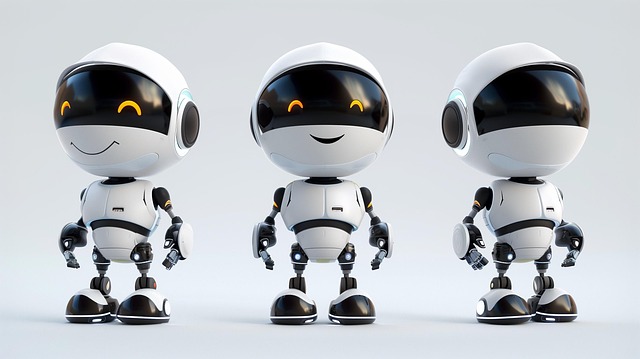AI chatbots, driven by advanced NLP and machine learning, have transformed human-computer interaction. From rule-based systems, they've evolved into sophisticated tools that handle diverse tasks, offer 24/7 support, and provide personalized experiences across industries like customer service, education, healthcare, and entertainment. Modern ochatbots understand context, learn from interactions, and deliver human-like responses, shaping a future of technology with increased intuitiveness and user-centricity. As technology progresses, AI chatbots are expected to revolutionize further with innovative applications.
In the digital age, AI chatbots are no longer mere tools but dynamic companions, reshaping how humans interact with technology. This article explores the rise of AI chatbots and their growing presence in our daily lives, driven by advancements in natural language processing (NLP). We delve into innovative use cases across industries, from customer service to entertainment. Furthermore, we examine the art of designing fun chatbots, uncovering psychological principles, key elements like personality and humor, and best practices for developers to create engaging, user-friendly chatbots.
- The Rise of AI Chatbots: Transforming Human-Computer Interaction
- – Exploring the evolution of AI chatbots and their increasing integration into daily life
The Rise of AI Chatbots: Transforming Human-Computer Interaction

The rise of AI chatbots has fundamentally transformed human-computer interaction, marking a significant shift from traditional user interfaces. These intelligent virtual assistants leverage advanced natural language processing (NLP) and machine learning algorithms to understand and respond to user queries in a conversational manner. As a result, ochatbots have become increasingly sophisticated, capable of handling complex tasks that range from customer service to content creation.
AI chatbots are now integral to various industries, offering round-the-clock support, personalized experiences, and enhanced accessibility. They can adapt to individual users’ preferences, learning from interactions to provide more accurate and contextually relevant responses over time. This evolution in human-computer interaction promises to continue shaping the future of technology, making digital services more intuitive and user-centric.
– Exploring the evolution of AI chatbots and their increasing integration into daily life

The evolution of AI chatbots has been a fascinating journey from simple rule-based systems to sophisticated conversational agents we interact with today. Early AI chatbots, like ELIZA and A.L.I.C.E., relied on pattern matching and pre-programmed responses. However, advancements in natural language processing (NLP) and machine learning have revolutionized the field. Modern AI chatbots can understand context, learn from user interactions, and generate human-like responses, making them more engaging and useful.
These improvements have led to an increasing integration of AI chatbots into our daily lives. They are now widely used in customer service, education, healthcare, and entertainment industries. From virtual assistants on our smartphones to automated support bots on e-commerce websites, AI chatbots are enhancing accessibility, efficiency, and personalizaton. As technology continues to advance, we can expect even more innovative applications of AI chatbots that will further blur the line between human interaction and machine assistance.
As we’ve explored, the rise of AI chatbots signifies a significant shift in human-computer interaction. These intelligent assistants are no longer mere tools but integral parts of our daily lives, offering convenience, personalization, and endless possibilities for innovation. With ongoing advancements, AI chatbots will continue to evolve, enhancing our experiences across various sectors, from customer service to creative collaboration. Embracing this transformation paves the way for a future where humans and chatbots coexist harmoniously, revolutionizing how we interact with technology.
